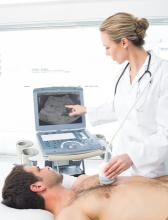Medical equipment comes in all shapes and sizes, from a tiny suture needle to a robotic surgeon that fills an entire operating theater, and everything in between. It’s a necessary part of the industry, but equipment that is improperly maintained, used, and cared for can create a dangerous situation and an unnecessary risk. What can medical professionals and health care facilities do to maintain safety when dealing with medical equipment?
1. Preventive Maintenance
Each piece of equipment in a healthcare facility — medical or otherwise — will come with a recommended maintenance schedule. Sticking to it doesn’t just keep your machinery running smoothly — it can also save the facility money. Machine failure that requires expensive repairs and costly liability lawsuits if something goes wrong and a patient is injured are minimized. All maintenance activities must be completed 100% and on time, according to the Association for Advancement in Medical Instrumentation. Most maintenance schedules are designed to prevent these sorts of catastrophic failures, but they don’t always cover every single variable possible. Preventive inspections and maintenance keep your equipment running smoothly by catching potential problems before they take it offline. Downtime can be incredibly costly, and in the case of essential medical equipment, it can also be dangerous or even deadly. Maintenance keeps you from putting patients at risk by taking this necessary equipment offline only when it isn’t needed.
2. Cable Safety
A large portion of currently used medical equipment relies on a variety of different types of cables, from electrical ones that carry power to each piece to specialty ones that can be damaged if not stored or protected properly. Endoscope cables rely on fiber optics to transmit light and video during endoscopic procedures. While these scopes need to be flexible to accomplish their tasks, the delicate fibers are prone to damage if they’re bent too sharply or stored improperly. Improper cable safety doesn’t just risk damaging the equipment. It can create a safety hazard for patients and medical professionals alike. Ensure all cables are stored properly and inspected regularly to protect both patients and professionals.
3. Cybersecurity
Many pieces of modern medical equipment are networked to make it easier to send and receive patient data securely. As technology improves and more networked devices become common, cybersecurity is going to become even more important for patient and professional safety. Medical IoT devices are especially vulnerable to hacks, such as the issues that medtech company Medtronic is having with its RF-enabled insulin pumps. These pumps can be hacked and remotely commanded to deliver too much or too little insulin. Both situations are dangerous for patients who rely on these pumps to regulate their blood sugar. The NHS experienced firsthand the importance of cybersecurity in 2017. Utilizing outdated operating systems left the patient systems vulnerable to the WannaCry ransomware that completely disabled the country’s health care network for days, costing the NHS more than 92 million pounds. For patient safety, cybersecurity is going to become one of the most important things to focus on moving forward.
Looking Forward
There’s more to medical equipment safety than just giving the instruction manual a cursory glance before you start your day. Cybersecurity, cable safety and preventive maintenance will all play a role in protecting both patients and medical professionals moving forward. Maintenace keeps your equipment from failing during use, and cable safety ensures that everything is in good working order, protecting patients and professionals from lacerations, electric shocks and other dangers. Cybersecurity will be paramount as the medical internet of things expands. Medical equipment security is everyone’s responsibility.








